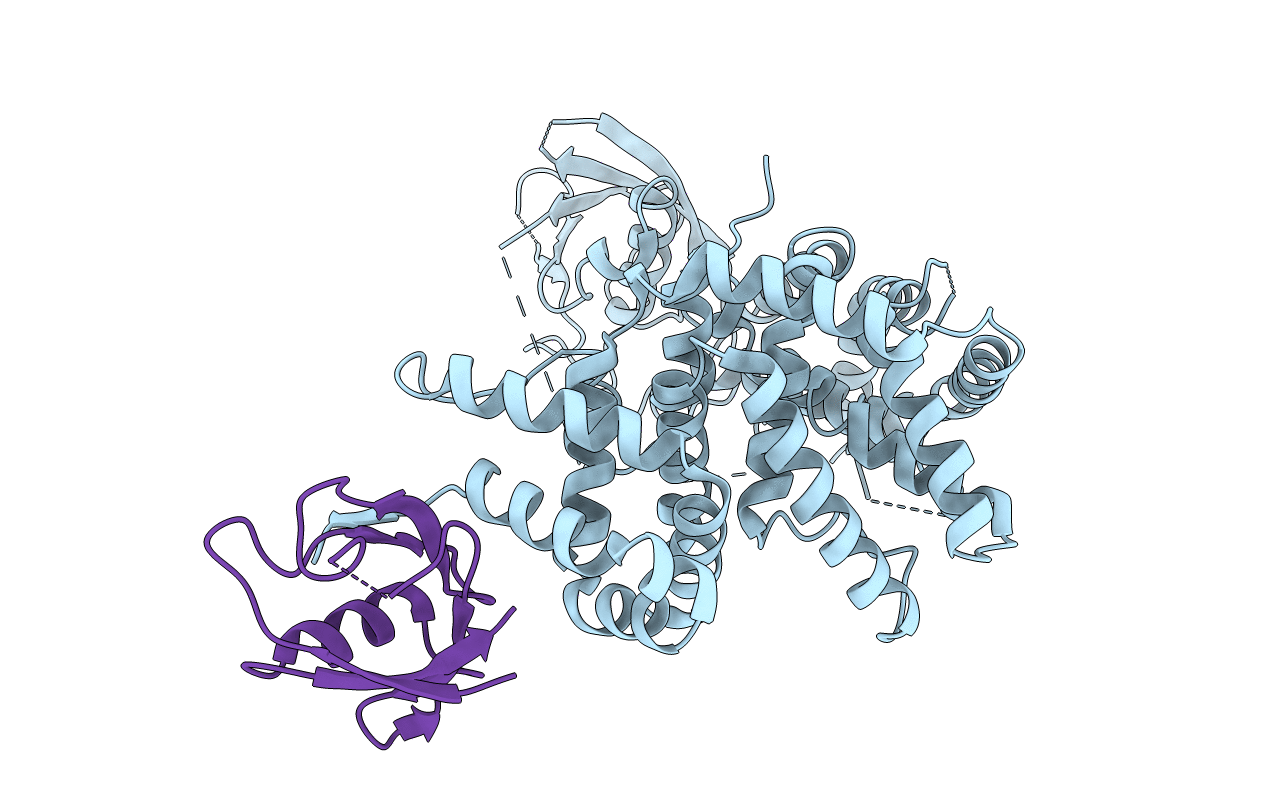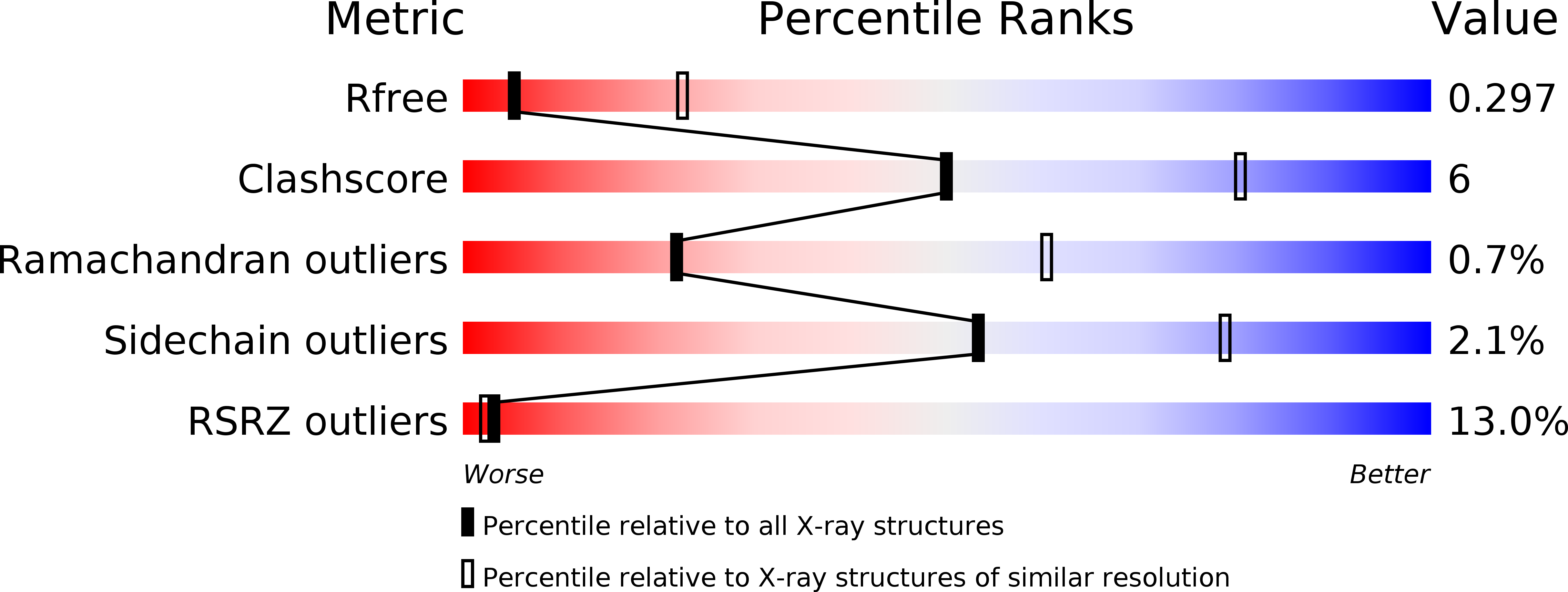
Deposition Date
2015-10-10
Release Date
2015-11-18
Last Version Date
2023-09-27
Entry Detail
PDB ID:
5E6P
Keywords:
Title:
PlexinB2 cytoplasmic region/PDZ-RhoGEF PDZ domain complex
Biological Source:
Source Organism:
Mus musculus (Taxon ID: 10090)
Homo sapiens (Taxon ID: 9606)
Homo sapiens (Taxon ID: 9606)
Host Organism:
Method Details:
Experimental Method:
Resolution:
3.22 Å
R-Value Free:
0.29
R-Value Work:
0.25
R-Value Observed:
0.25
Space Group:
P 62 2 2


